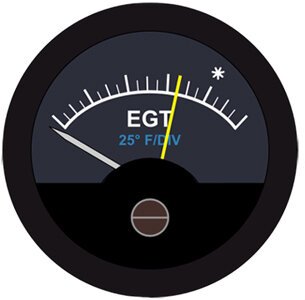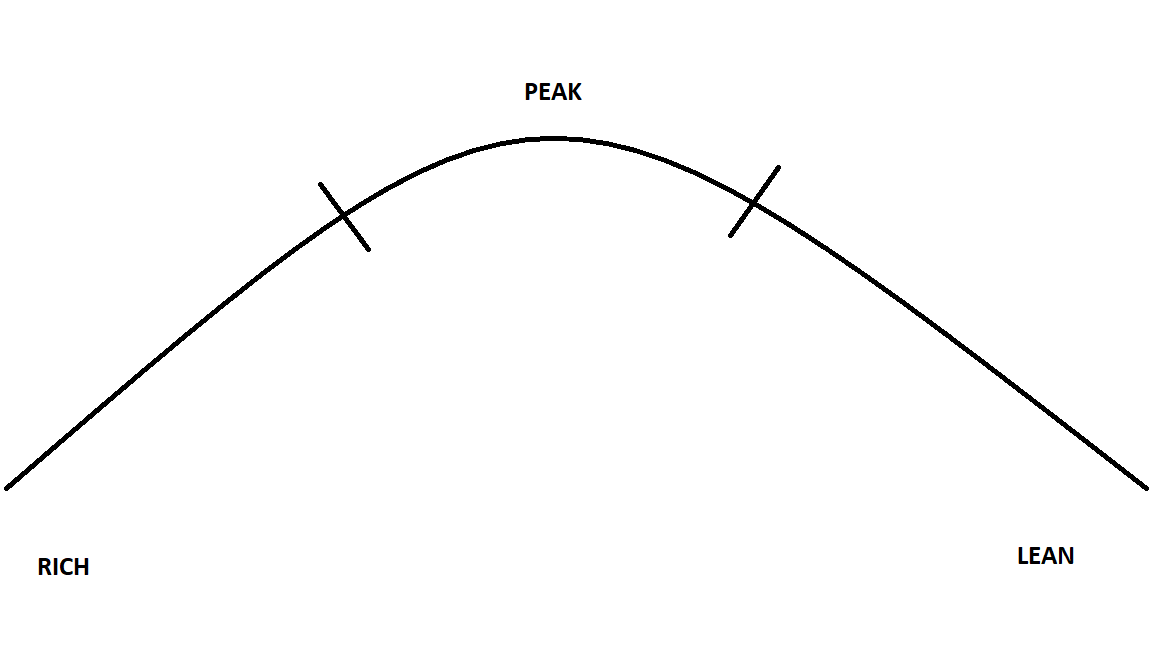
The Diamond DA40 has an EGT probe and Cylinder Head Temperature probe in each cylinder. This allow better engine control and monitoring.
Leaning is the easiest thing to do in an airplane, yet it is not really taught because most people really don’t understand how it works or even how to do it properly.
What are we doing when we lean?
Most older aircraft engines never had fuel computers like modern aircraft or cars. Since airplanes are always changing elevation, we must adjust the fuel-to-air ratio due to the less dense air present at different altitudes.
Leaning has a few pros and cons. You can significantly affect your range if you lean. Your engine prefers to run at the appropriate ratio to prevent fouling plugs. Proper leaning also helps the engine maintain its ideal operating temperature. The downside to all of this is that if you run the engine too lean, you can have preignition, detonation, and/or significantly affect your engine (your fuel savings will be spent on new cylinders)!
The ideal fuel to air ratio is about 1:14, but we have nothing in our cockpits that give us this number. So how do we do it?
Exhaust Gas Temperature (EGT) Gauge

If you are lucky to find a plane with a working EGT, leaning just got easier. Once you are established in cruise, you will begin by bringing the mixture back (extremely slow) and watch the temperature rise slowly. Most light airplanes only have one EGT probe, and it is located in the usual hottest cylinder. Some airplanes have a probe for each cylinder; this is the best option because you reduce the risk of overheating a cylinder. You would continue leaning until you see the needle move in the opposite direction; this is peak EGT. Once you have Peak EGT you can run the left (rich side of the peak) or right (lean of peak), depending on what the aircraft manufacturer recommends.

As we bring back the mixture, we reduce the amount of fuel, and the EGT becomes hotter until it reaches the hottest point (peak EGT). If you continue to bring back the mixture, you now have more air than fuel, and the EGT begins to decrease.
How to lean without any special instruments?
The easiest way to lean, which might not be the most effective, is achieved using the following steps:
Once you reach your cruising altitude, set cruise power.
Lean by decreasing the mixture leveler slowly until you hear engine roughness. (You may see a rise in RPM just before the roughness.)
Increase the mixture slightly until engine roughness stops.
If you decide to change any power setting or climb, enrich the mixture before the power change and then complete the steps again.
Leaning with fancy equipment?
This is the best way to propel lean, just because we can see a live view of everything that is happening in the engine. With good equipment, you will have Exhaust Gas Temperature (EGT), Cylinder Head Temperature (CHT), and sometimes oil temperature. On the advanced avionics, you will have a lean assist, and here is how most work.
Lean the engine somewhere you think it should be, usually done with fuel flow.
Activate the smart lean option. In the G1000, this is called “Lean Assist.”
Continue to gradually lean the engine until the first cylinder peaks.
Enrich the mixture back to recommend degrees rich of the peak by the manufacture.
Since ideal levels for leaning can vary from one aircraft to another and change based on altitude and temperature, we advise you to speak with other pilots and always follow the aircraft manufacturer's recommendations.
Have a question on leaning? Shoot us an email!


.png?width=178&height=50&name=Aviator%20Zone%20Academy%20(5).png)
Submit a Comment